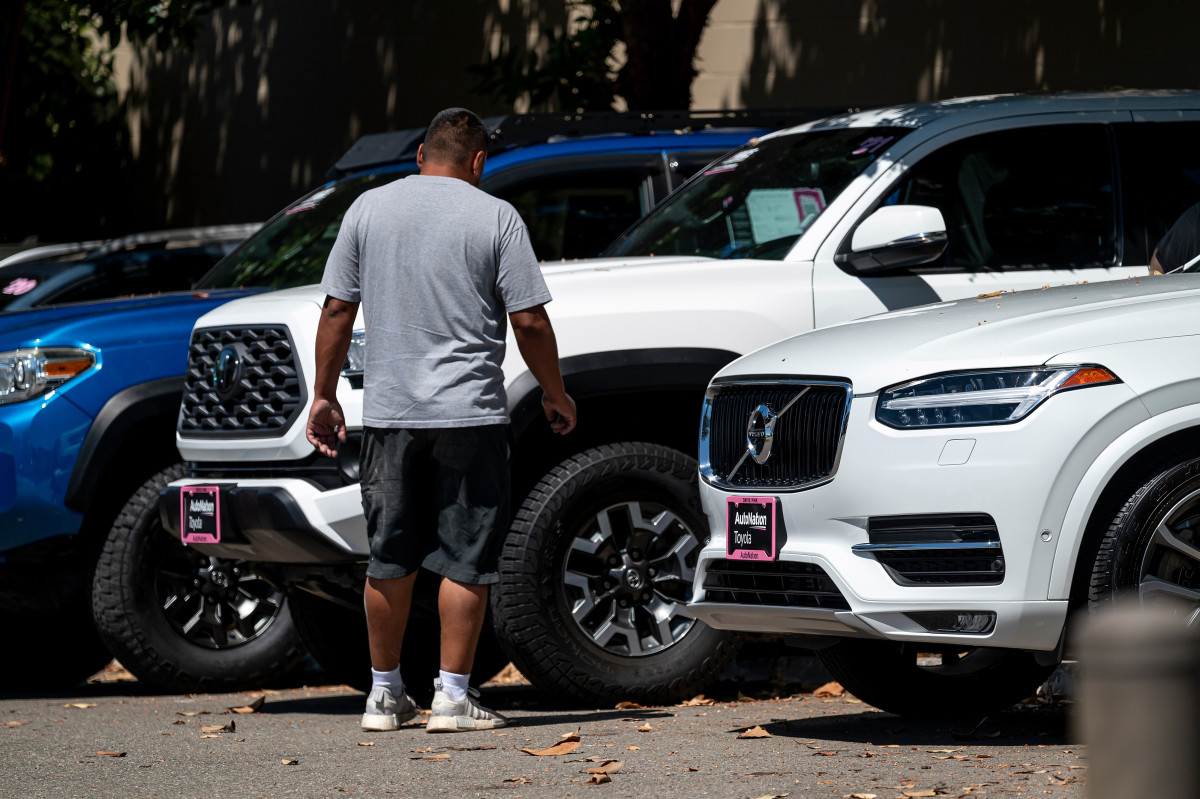The number of Americans who owe more on their car loans than their vehicles are worth has reached an all-time high, according to new data from Edmunds.
In the fourth quarter of 2024, nearly 25% of vehicle trade-ins toward new purchases were underwater, meaning the owners owed more than the trade-in value of their cars. This marks a significant increase from 20.4% during the same period in 2023.

David Paul Morris/Bloomberg via Getty Images
Even more alarming, the average amount owed on upside-down loans climbed to a record $6,838, surpassing the previous quarter’s high of $6,458. Experts say the trend is particularly worrisome as the cycle of rolling negative equity into new loans makes it increasingly difficult for borrowers to escape debt.
Related: European automakers face a “perfect storm” as sales stagnate
A growing debt burden
Among those with negative equity, about a quarter owed more than $10,000 on their loans, compared to 22% in the third quarter of 2024. A smaller but notable group, 8.5%, owed over $15,000, an increase from 7.5% in the previous quarter.

Bloomberg/Getty Images
Jessica Caldwell, Edmunds’ head of insights, said the situation was unprecedented.
“Negative equity isn’t a brand-new phenomenon in the auto lending space—in fact, it wasn’t too long ago when more than a third of trade-ins toward new-car purchases were upside down,” she said. “What’s particularly alarming in the Q4 figures is that a growing share of trade-ins are hitting the double-digit mark in thousands of dollars owed, making the cycle far more challenging for consumers to escape.”
For many, this mounting debt translates into significantly higher monthly payments. On average, consumers who traded in vehicles with negative equity in the fourth quarter faced $159 higher monthly payments and financed $12,388 more than the industry average for all new vehicles.
Related: Biden admin commits $635 million to EVs in final days
Why negative equity is growing
The rise in negative equity stems from several factors, including higher vehicle prices and extended loan terms. During the pandemic, low interest rates and pent-up demand pushed many consumers into purchasing expensive vehicles with long-term loans. Now, as used car values normalize, borrowers are finding their vehicles are worth far less than they owe.

Honda
The average trade-in age for vehicles has also risen, now standing at 3.3 years compared to 2.7 years in 2021. Longer loan terms mean borrowers have less equity built up when they decide to trade in, exacerbating the problem.
Getting out from upside-down loans
Experts warn that rolling negative equity into a new loan can lead to a vicious cycle of financial strain. Ivan Drury, Edmunds’ director of insights, said that consumers should consider alternatives before trading in a vehicle with an upside-down loan. “If you’re significantly underwater, the best move is to hold onto your car, keep up with payments, and maintain the vehicle properly,” Drury said.
Related: These Honda models could spawn from their potential merger with Nissan
Final thoughts
With car prices remaining high and interest rates barely declining, the challenges of negative equity are likely to persist. Edmunds’ data shows that this isn’t just an issue for individual borrowers but a broader trend reshaping the auto financing landscape.
While trading in a vehicle with negative equity might seem like a quick fix, the long-term consequences can be severe. Every situation is different, so there’s no one-size-fits-all solution, but if you find yourself with negative equity on a car, you’re almost certainly better off not trading it in for a new one.
Related: Ford BlueCruise faces scrutiny after fatal Mustang Mach-E crashes